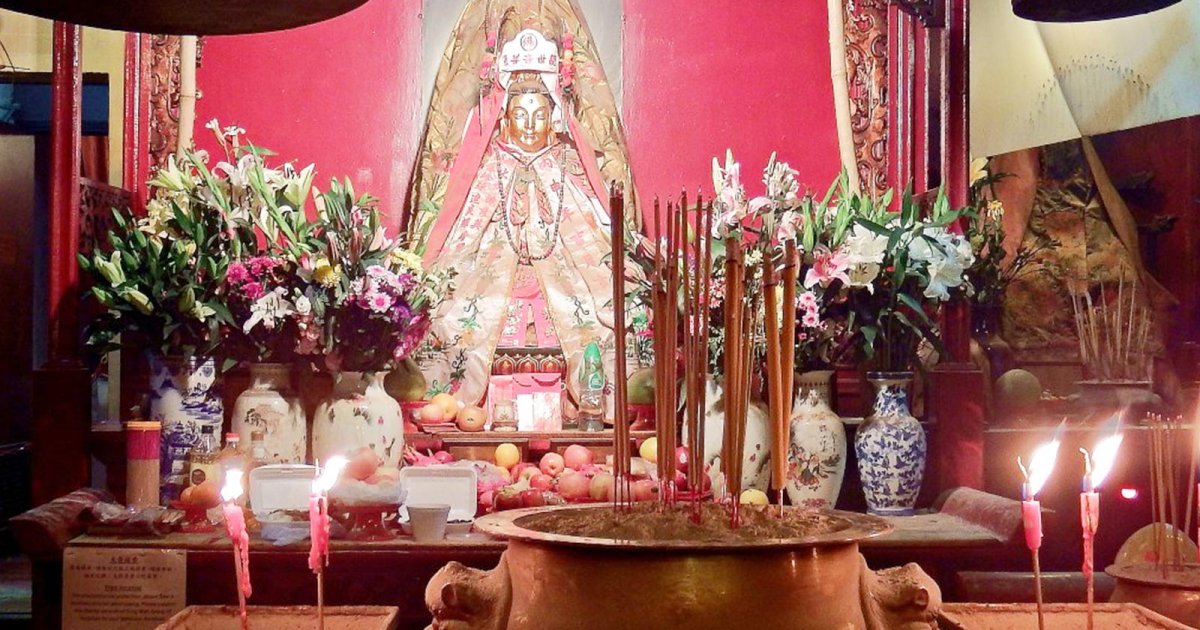MAN MO TEMPLE, Lit Shing Temple E Kung So Assembly Hall
 Language: English / USA
Language: English / USA
Unlike the Man Mo Temple, dedicated exclusively to Taoist deities, in the Lit Shing Temple, Taoism and Buddhism coexist in harmony. Inside, you’ll see statues representing gods from both religions; you’ll easily recognize the gilded ones depicting Buddha.
Worshippers offer the gods fruit and incense, usually in the form of bunches of long sticks they hold in their hands while praying and then leave in large gilded containers.
At the end of prayers, a gong is repeatedly rung to get the attention of the gods.
Now press pause and enter the third and last hall.
During the colonial period, the Kung So Assembly Hall was for many years considered a place of fundamental importance for solving private disputes between the Chinese inhabitants of Hong Kong. All matters dealt with in this hall, and the decisions taken regarding them, were considered sacred by those involved, and were also respected by the British government.
When a verdict was reached, it was written in a document that also indicated the punishment to be applied if a party broke the agreement. To sanctify the decision, a rooster was sacrificed to the gods, and its blood smeared on the document, which would later be burned.
Because the faithful were very respectful of the will of the gods, these agreements were rarely broken.
Near the Man Mo Temple, you can also see the Pak Sing Ancestral Hall, dating to the same period: a simple, unadorned hall of immense importance to the population at the time. Many Chinese immigrants living in Hong Kong wished to be buried in China upon their death, and it was here that the bodies were kept before being sent back home, while those whose families could not afford to pay the transport costs remained there. To this day, there is an altar testifying to their existence, with over 3000 plaques left by the families.
An interesting fact: in addition to being used as a morgue, the Pak Sing Ancestral Hall accommodated the local population who often preferred to consult traditional Chinese medical practitioners rather than Western doctors in the 19th century.
Our visit to the Man Mo Temple ends here. MyWoWo would like to thank you - see you again at another Wonder of the World!



